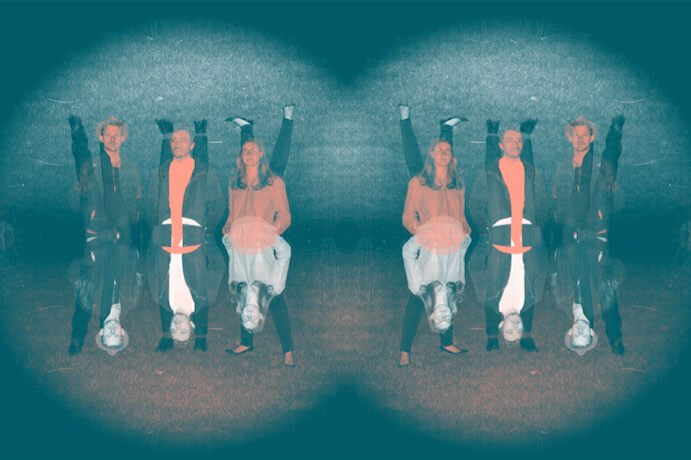First impressions can tell you a lot. So the adage goes, the first seven seconds of an interview or date are often the most important, and they last. Recently I’ve talked with a lot of friends about how true this can be in music as well, and TIGUE, the Brooklyn-based trio made up of Matt Evans, Amy Garapic, and Carson Moody, makes an awesome first impression.
Their 2015 New Amsterdam Records release titled Peaks begins not with a bang (despite being largely a percussion trio), not with unheard-of and avant-garde sound that captures your attention and imagination due to its novelty, but with rim clicks. Just rim clicks. And it’s awesome.
With infectious energy, Peaks begins with a fast, click-based groove that is reminiscent of sections from Michael Gordon’s Timber. What follows, however, is a constantly shifting and always interesting transformation of grooves and timbres that could appeal to crowds at your neighborhood dive or your local concert hall. There are no breaks between the tracks on Peaks, and this seems appropriate for TIGUE’s musical language. New instruments and sounds gradually introduce new beats that gradually become the pulse, only to be transformed by the next instrument that enters. This is something like what might happen if Elliott Carter and Michael Gordon started messing with Face Swap Live, and the result is fantastic.

The first large section of Peaks is largely based on drum sounds. As the work progresses, drones gradually become more prevalent, and eventually take over. One of the most rewarding things about this album is how well TIGUE moves from one idea to the next. Transitions are so natural that the album sounds, for the most part, like one large-scale piece. Both timbre and groove play important roles in many of these transitions, each ushering in new material that seems natural yet fresh. The middle two tracks on the album—called “Drones” and “Drips” respectively—also help to make Peaks sound like a continuous work. For both of these, TIGUE cleverly moves away from the driving pulse that opens the album, only to begin gradually returning to it in “Dress Well.” The album ends as you might expect: “Ripped,” the final track, is two minutes of badass virtuosic groove that every kid with a drum kit in a basement corner dreams of one day playing.
Despite all of the organic transitions—or perhaps because of them—it is often easy to imagine what will come next as you listen to Peaks, but that doesn’t make it any less interesting or satisfying when the new music arrives. In “Drones,” for example, the sounds start with low pitches and gradually, almost systematically, get higher. Admittedly, this sounds rather bland as I’ve described it, but it’s remarkably rewarding to hear (which is why you should stop reading this and give it a listen instead).
Refreshingly, TIGUE does not seem to be attempting some overwrought or grandiose statement with their first album; instead, they’ve created and performed music that is fun to listen to and sounds entirely genuine. It seems rare that a debut chamber recording composed collaboratively would be this appealing. TIGUE brings contagious energy to Peaks, and while it might be easy to imagine what will come next from them, I can’t wait to hear it.
























